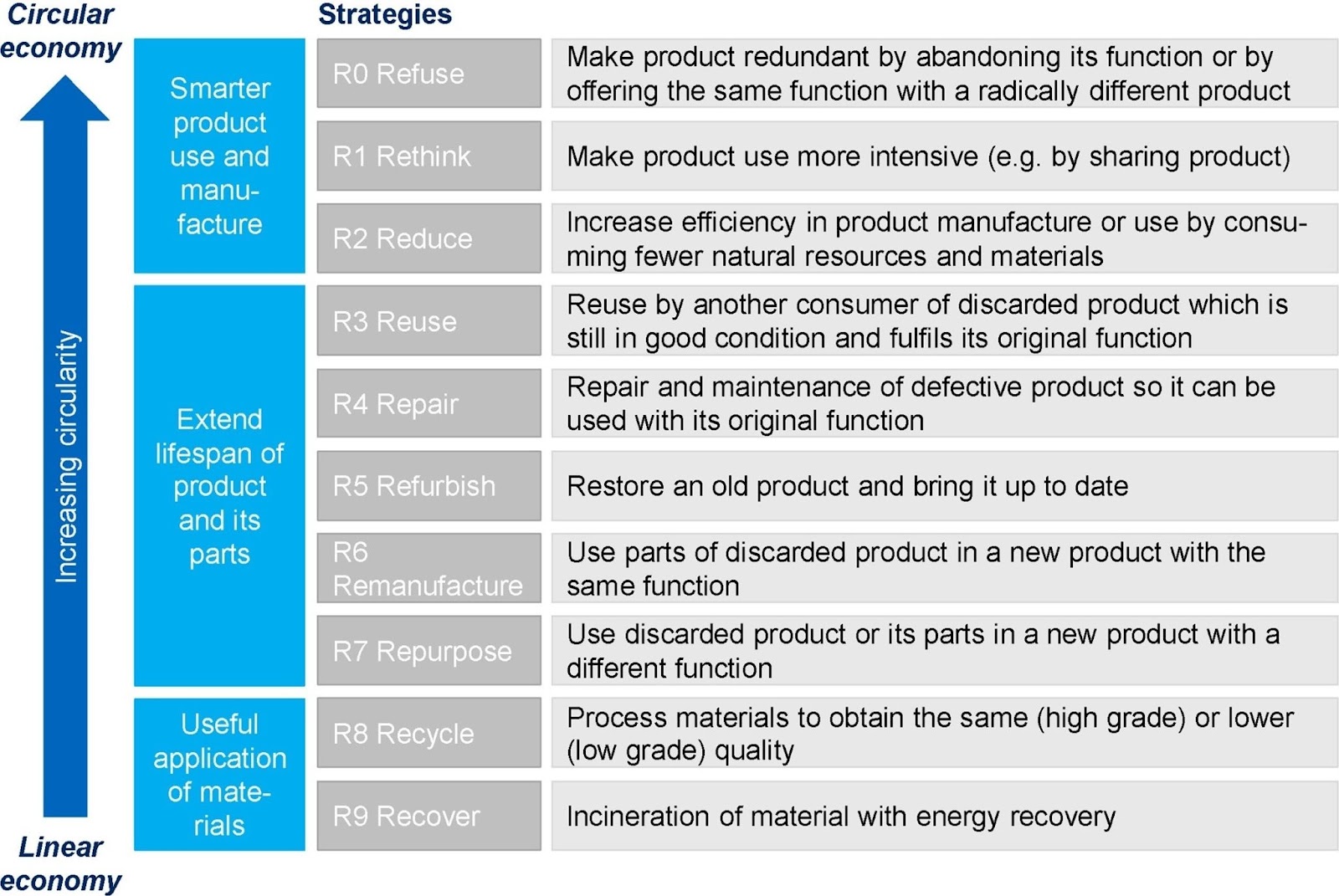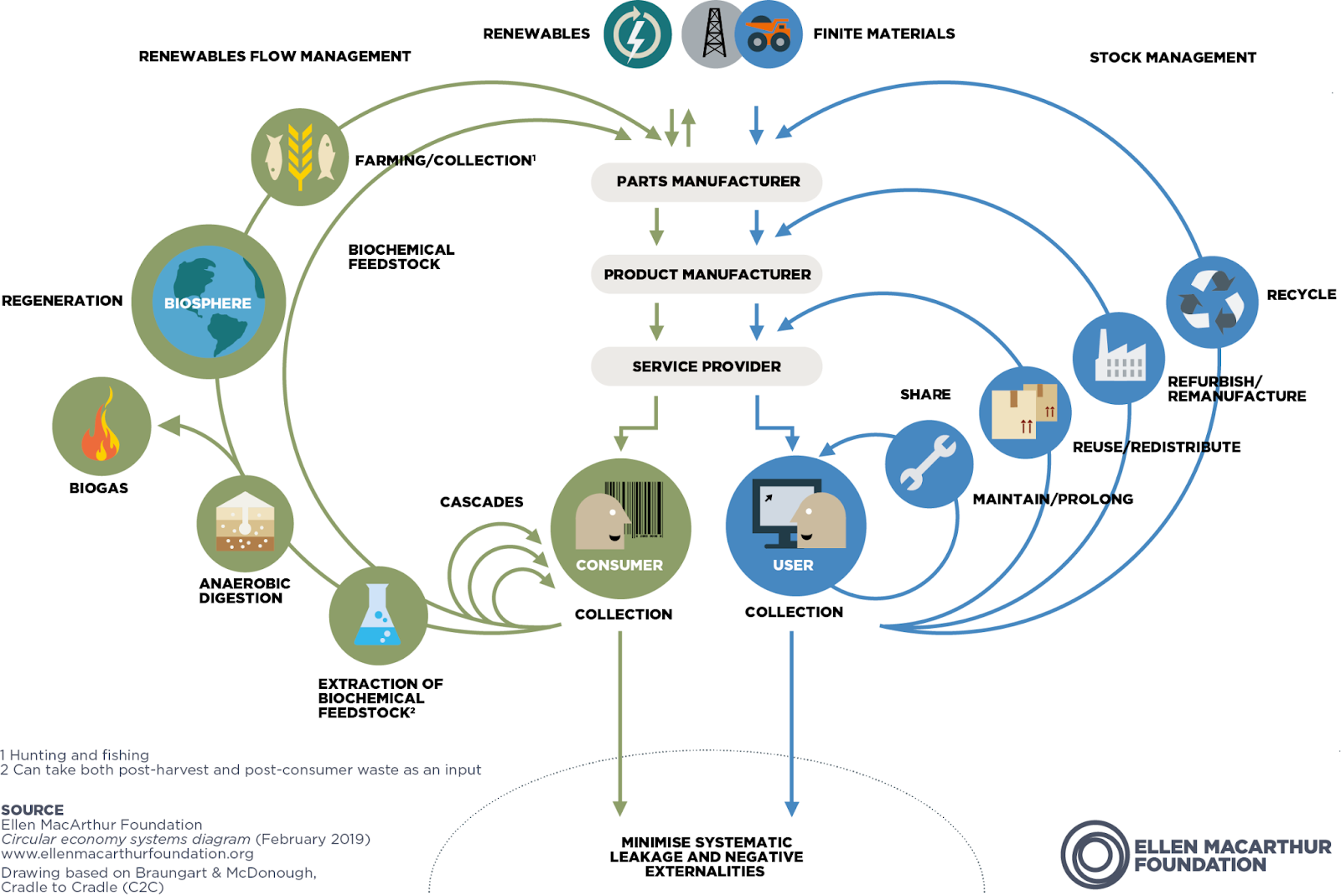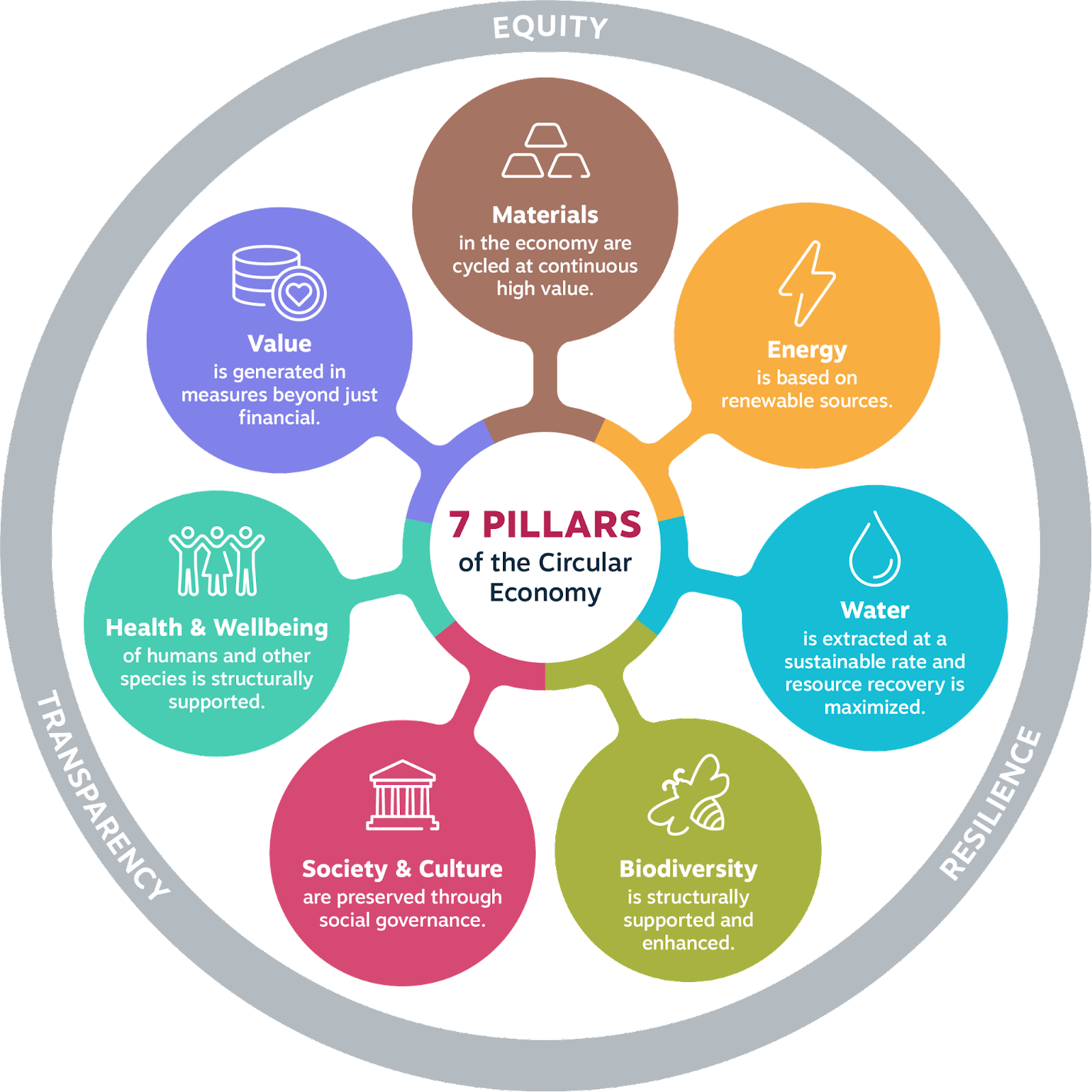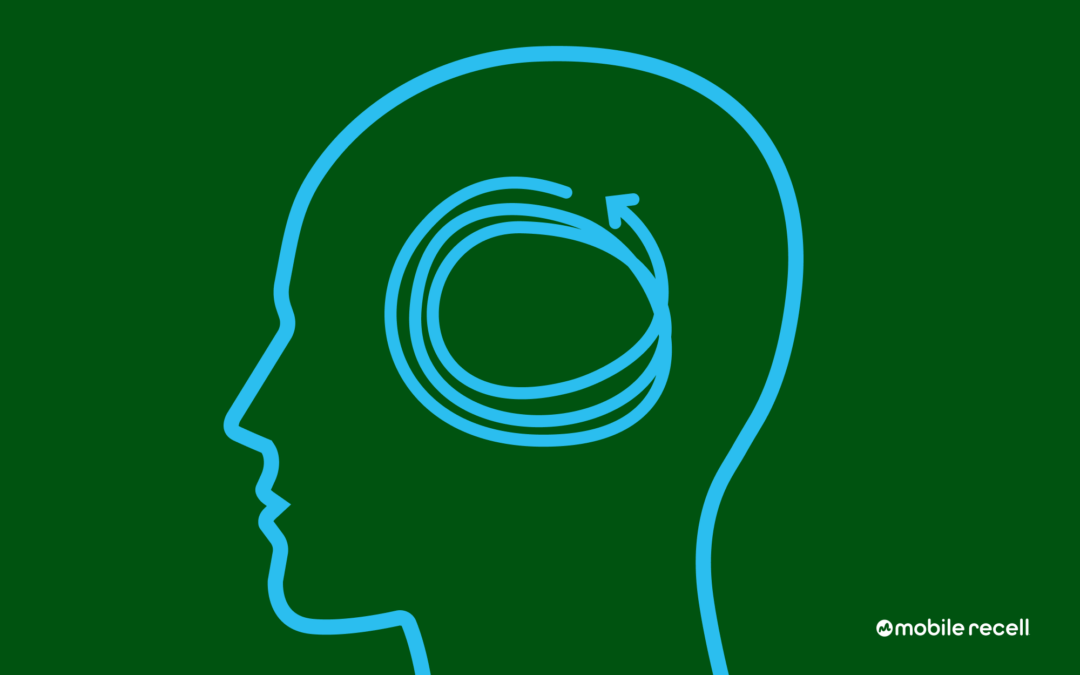The circular economy brings a holistic and intentional approach to materials management, as it is the highest form of materials efficiency with significant impacts beyond how materials are sourced. Pursuing the circular economy requires a shift in thinking and a wider perspective.
Put It Into Perspective
The best source of inspiration for shifting towards the circular economy is nature. In an ecosystem, there is no such thing as waste; waste materials from one biological process are food for another.
With this concept, its easier to understand that waste is a human-created design flaw. The good news is, a design flaw can be fixed with a better design process.
To eliminate the concept of waste means to design things—products, packaging, and systems—from the very beginning with the understanding that waste does not exist.
– William McDonough
The circular economy is the reverse of traditional design-thinking, as it is designed to avoid waste. To achieve this, we must shift our thinking from the linear economy and consider the full lifecycle of a product and its component materials throughout the entire process. This can only be achieved when designers prioritize durability and embrace the full spectrum of R words—including reduce, reuse, recycle, repurpose, recover, and more.

Image Source: World Economic Forum
How the Circular Economy Works
In the circular economy, there are two distinct types of materials which filter through their own cycles, or loops.
The first type is biological nutrients, which are the materials that can biodegrade back into the earth such as wood, cotton, and food.
The second type is technical nutrients, which includes anything that doesn’t biodegrade, such as metals, plastics, and minerals.
These two nutrient cycles function best when the different materials are either kept separate, or, if combined, are designed to be easily separated.
The Ellen MacArthur Foundation’s Butterfly Diagram illustrates these two nutrient cycles and the activities that occur in each.

Image Source: Ellen MacArthur Foundation
Circularity goes beyond the physical materials and includes positive outcomes related to water, renewable energy, energy efficiency, value generation, social governance, and more.
The team at Metabolic has outlined the Seven Pillars of the Circular Economy, describing each pillar in detail.

Image Source: Metabolic
Shifting Towards Circularity
Innovative approaches to materials management and product ownership are two rapidly expanding areas of the circular economy.
Technology is the engine for logistical improvements and facilitates new models for sharing, leasing, and more—all while maximizing efficiency, access, and convenience.
Chances are, you already participate in circular models in your everyday life and are reaping those benefits while preventing waste and supporting the shift to a more circular economy.
Learn how Mobile reCell’s innovative technology solution can help you integrate circularity in your IT asset recovery programs.
Follow us on social media!
See Mobile reCell’s Recovery Platform in action.

